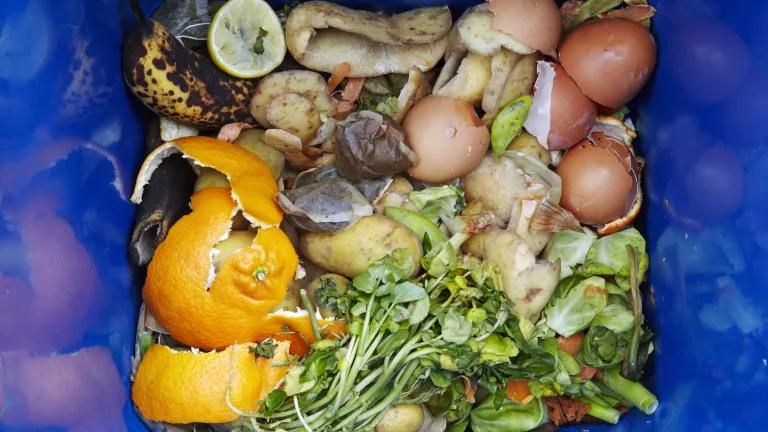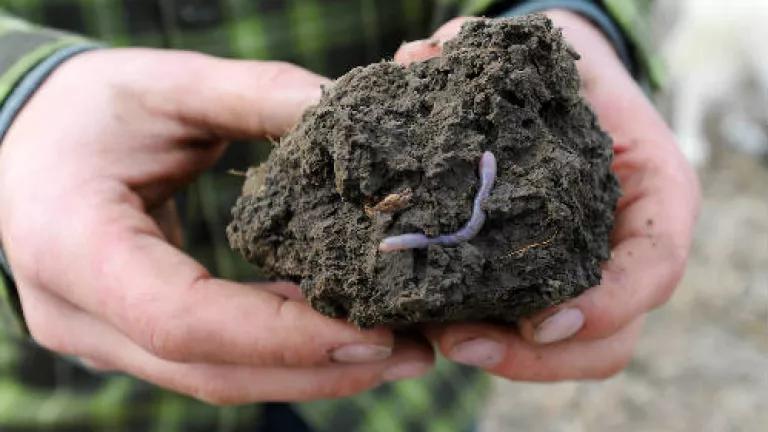Giving Thanks and Wasting Less

Thanksgiving is a time for coming together at the same table to share delicious food with the people who matter most to you. This year, my fiancé from Mexico City will be joining my family and long-time friends in San Diego for his first real Thanksgiving meal—he’s really curious about the yams with marshmallows on them (not a well-known dish in Mexico!).
Unfortunately, it has the added side effect of massive amounts of food, money and resources going to waste. Each year, about 200 million pounds of turkey meat are thrown out over the Thanksgiving holiday week. Trashed along with it is all of the water and energy used to get it to our plates. It’s enough for every household in America to run their faucet for 6 hours, or the entire population of Jacksonville, Florida, getting in their own car (even the kids!) and driving separately to San Francisco. Nutritionally, that’s 25.6 billion grams of protein never eaten—enough to meet more than 500 million adults’ recommended daily protein intake.
Fortunately there are plenty of easy ways to keep more of your family’s favorite dishes in your bellies and out of the trash. Here are a few tips drawn from my own experience:
- Don’t go overboard. Use the Guest-imator, NRDC’s free online portion calculator, to figure out the right amount of food you need to prepare for the size of the part you’re hosting, from the side dishes to mains, desserts and even leftovers
- Tell your guests to bring their own to-go containers. Not just because you don’t want to risk never seeing yours again, but because you’ll be left with less and your guests will get to take a little bit of Thanksgiving home with them for another meal. Better yet, invite more friends over for post-dinner Monopoly (or any other board game, but preferably a gruesomely long one) like my family does. Draw out the game for as long as possible and you’ll see people start to get hungry again, and leftovers will slowly disappear as the night goes on.
- Don’t peel your potatoes: Or nearly any veggie, really. It’s a waste of time and nutrients, and I think you’ll find most dishes are just as good (sometimes even better!) with the peel on.
- Embrace the mishaps: A lot can go wrong when you’re prepping a large meal—burnt food, too much salt, too little flavor—but before you trash it, check out these tips for giving your dish new life.
- Get creative with your leftovers. Every family has their own leftovers traditions—my favorites are my mom’s turkey soup with corn, and turkey breakfast sandwiches with leftover rolls. Coming from a Mexican-American background, I love testing out some Mexican-inspired dishes with my leftovers. This year, I’m gearing up to make turkey pozole and my favorite Mexican breakfast—chilaquiles—but instead of chicken, turkey! It helps to have an extra ingredients you’ll need on hand before the long weekend, when leaving the house can be daunting.
- Share the Thanksgiving love with your pets. Did you get to the point where you just can’t bare the idea of eating turkey one more time post-Thanksgiving? Throw that turkey and some of the pet-safe ingredients like sweet potatoes and green beans into a pot (skip the bones and onions!) with some brown rice and show your pets some love!
- Freeze before you toss. As the shelf life of your leftovers and surplus ingredients comes close to an end, consider popping them in the freezer before it’s too late. Nearly anything can be frozen and rediscovered for a dark winter weeknight when you don’t have the energy to cook.
- Choose one of your staple ingredients and try to learn a little more about it. It doesn’t have to be the turkey, green beans could be equally as intriguing. Ask dear Google some questions—where did these green beans come from? If possible, try to figure out who grew them. And dive deeper into the details—how much water was used to grow green beans? What’s the climate footprint of one green bean? Understanding more about our food can create a deeper sense of appreciation. And when we appreciate our food, it becomes harder to waste it.
- Use food waste as a conversation starter. The largest single source of food waste is people in their own homes. The average family of four loses $1,500 a year on food that goes uneaten! But most people don’t even realize how much they waste until they start paying attention to it. Share the steps you took to avoid waste this year with your guests so they try them out themselves—who doesn’t love to save money?
In addition to thinking about how to reduce the amount of food going waste at your own table, Thanksgiving is also a great time of year to think about ways to help others who don’t have a steady food supply.
Food insecurity is a problem that effects every community in the U.S. whether urban, suburban or rural.
NRDC’s food waste team is working with cities across the country to boost donations of surplus food—from places like grocery stores and restaurants—to ensure people have enough quality food on their plates year-round. It’s critical, because 40 million people in this country—or 1 in 8 Americans—lack a secure supply of food to their tables. Many of them are disabled, elderly, working poor, veterans or kids. On top of that, a recent NRDC survey of Baltimore residents who visit food pantries and other sources of donated food found that one-third of clients indicated the food does not adequately align with their dietary needs, such as diabetic restrictions or heart-healthy diets.
You can help by volunteering your time at your local food bank—whether over the holidays when kitchens are booming, or all year round when volunteering declines. And by calling on your local leaders to take action to boost food donation. (Check out Food Policy Action’s Scorecard to see whether your state legislators voted to keep food safe, healthy, and affordable.)
When I sit down to the dinner table this year, I will be giving thanks for is for the food on my plate—for the time, resources, money, labor, and love that went into bringing it to me. For my mom, who every year spend hours on end in the kitchen creating the most delicious meal for us to share. And for the happiness that can be shared with others when they can enjoy it too.
Happy Thanksgiving, all! And for more food waste-fighting tips all year round, check out savethefood.com or follow us at @NRDCFood.




